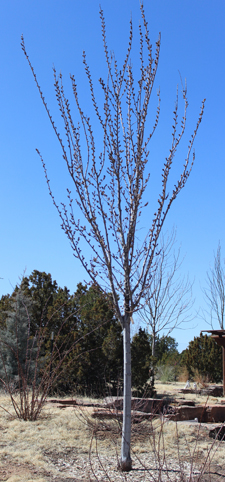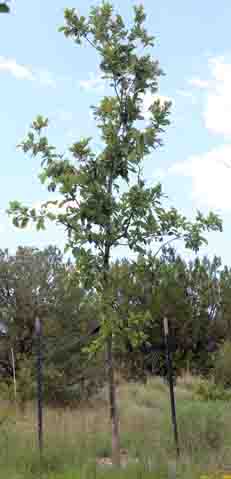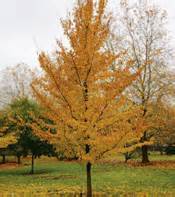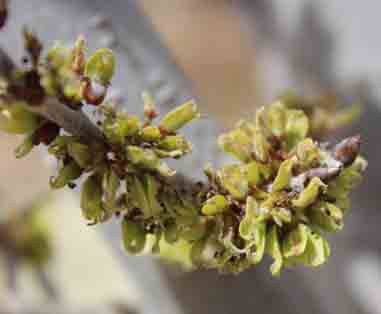Elm, 'Emerald Sunshine'- Ulmus propininqua 'Emerald Sunshine'
 |
 |
 |
Early Spring |
Summer |
Fall (from bloominggarden.com) |
 |
 |
 |
The Buds & Flowers |
The Flowers |
The Seeds |
Description
"Grown from seed collected in China. Sturdy, upright growing Elm was selected for its superior heat tolerance. Its deeply corrugated leaves emerge a coppery-bronze, maturing to a glossy green. Rich yellow Fall color. Very drought and heat tolerant, as well as insect resistant. A fast growing, adaptable shade tree." (Wilson Nurseries)
"Emerald Sunshine attains a height of 9 m and develops a neat vase shape, the crown < 7.5 m in width borne by a stout stem. The cultivar has thick, deep-green leaves [2] turning dull yellow in the fall. Trees planted as part of the National Elm Trial at the Bowley Plant Science Teaching Center, U C Davis, in northern California grew comparatively slowly, increasing in height by 1 m and d.b.h. by 1.6 cm per annum.[2] The tree was summarized by Michael Dirr, Professor of Horticulture at the University of Georgia as 'impressive' [3]." (Wikipedia)
Lacebark Elm - Ulmus parvifolia
(Chinese Elm)
Tree |
Leaves & Seeds |
"Ulmus parvifolia, commonly known as the Chinese elm[1] or lacebark elm, is a species native to eastern Asia, including China, India, Taiwan, Japan, North Korea, and Vietnam.[2] It has been described as "one of the most splendid elms, having the poise of a graceful Nothofagus".[3]
The tree was introduced to the UK in 1794 by James Main, who collected in China for Gilbert Slater of Low Layton, Essex.[4][5]" (Wikipedia)
Description
"A small to medium deciduous, semi-deciduous (rarely semi-evergreen) tree growing to 10–18 m (33–59 ft) tall and 15–20 m (49–66 ft) wide with a slender trunk and crown. The leathery, lustrous green single-toothed leaves are small, 2–5 cm long by 1–3 cm broad, and often retained as late as December or even January in Europe and North America. The apetalous wind-pollinated perfect flowers are produced in early autumn, small and inconspicuous. The fruit is a samara, elliptic to ovate-elliptic, 10–13 mm long by 6–8 mm broad.[2] The samara is mostly glabrous, the seed at the centre or toward the apex, borne on a stalk 1–3 mm in length; it matures rapidly and disperses by late autumn. The trunk has a handsome, flaking bark of mottled greys with tans and reds, giving rise to its other common name, the lacebark elm, although scarring from major branch loss can lead to large canker-like wounds.[5][6][7][8][9]." (Wikipedia)
Elm, 'Frontier' - Ulmus (carpinifolia x parvifolia) 'Frontier'
Description
- "Single trunked, upright-pyramidal tree with proven superior resistance to Dutch elm disease. Smooth, grey-green bark and remarkable fall foliage colors of red-purple. Deciduous." - Monrovia